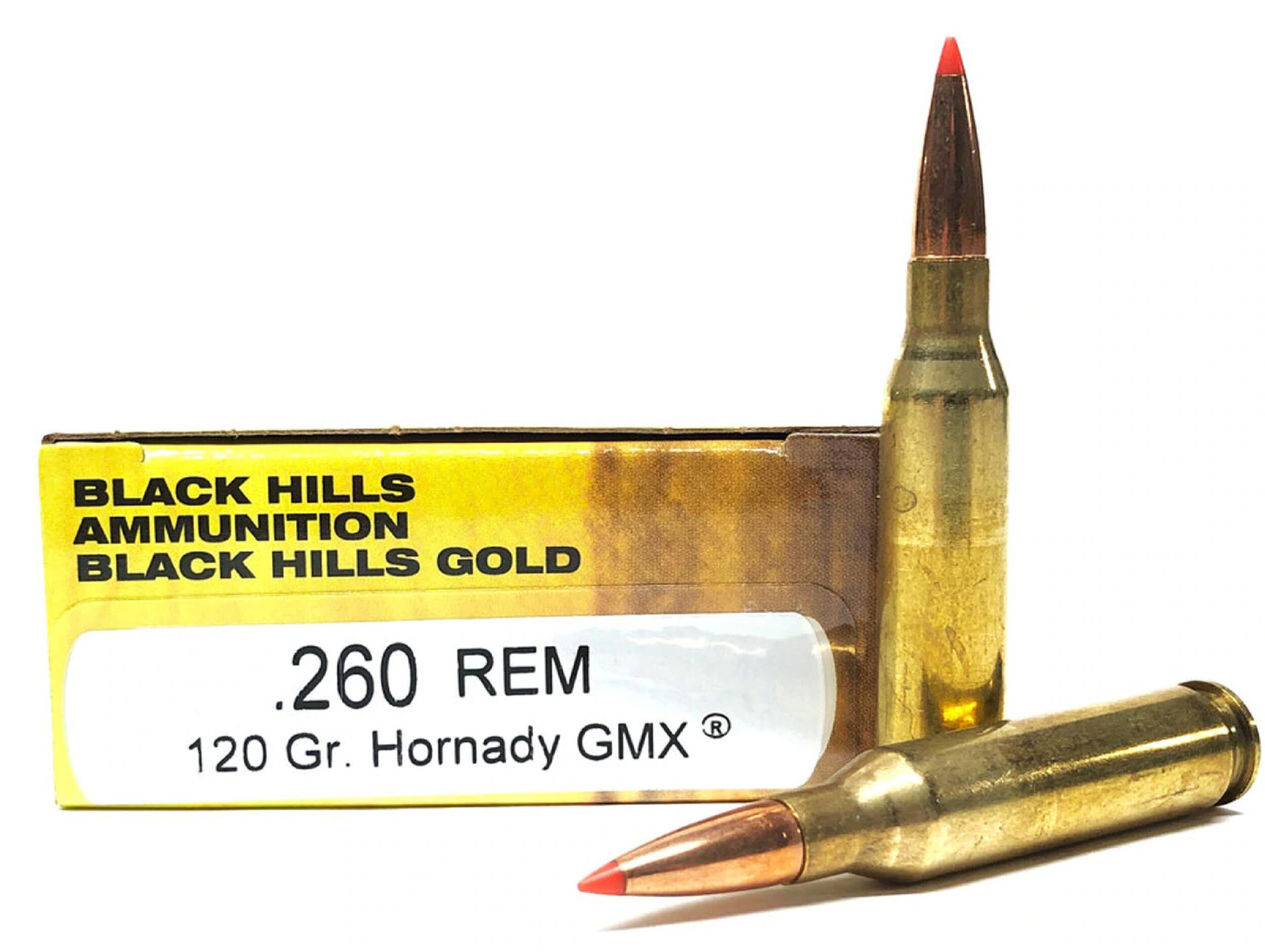260 Remington
I’ve been a mixed-feelings fan of the 243 Winchester since the late 1950s. The rifles I had chambered for it were usually pretty accurate, particularly in the older days when the common twist rate was one-in-ten inches. I preferred shooting lighter bullets, especially the 75-grain Sierra Hollow point, so a 12" twist would have been just fine. Now, in recent years, the common twist for many makers is closer to one-in-nine inches. Count me out, because I don’t regard the 243 Winchester to be a big game cartridge. So what’s my beef? I have never been impressed with the barrel life; chrome-moly or stainless. I like to blame the shoulder angle and short neck for this.
After all, the 243 is just the 308 Winchester case necked down. Necked down too far, actually. Maybe 6.5mm (0.264”) would have been better. That’s what I was thinking when I was examining my pre-64 Model 70 Varmint Rifle in the mid-1960s. The new breed of Model 70s had been introduced by then, but this rifle was only a few years old and the groups had opened up. Without the availability of a bore scope (remember, mid-60s), all one could do was remove the stock from the barreled action, and then look at the throat from the breech using various magnifications of reading glasses. It was rough and shoddy for an inch or so; soon to get worse.
That’s when I contacted P.O. Ackley and asked about a re-bore job. I wanted to try going to .264” with the same 10-inch twist. I had no plans beyond that. He accepted the job, and I sent him the barreled action.
The rifle was returned several weeks later, with the additional stamping of “264/“ just to the upper left of the “243” that was already present. So here was a 264/243 Winchester, long before the same round became the 260 Remington.
This rifle shot just fine, as I used bullets of from 85 to 100 grains. My preference was the lighter bullets and, if memory serves correctly, there was a load with an 85-grain Sierra flat-base hollow point that shot consistently around four tenths of an inch. (I included the notebook of information with the rifle when I sold it.)
Remington eventually called the cartridge their own, and I must agree that it is a significantly better round than the 243. With certain bullets of beyond 120 grains, it truly can be considered a (smaller) big game cartridge. The people I have visited with over the years have had success with most everything from 129 through 140 grains. On the other end, lightly constructed bullets work every bit as well on varmints as light bullets in the 243. The 85-grain Sierra, for example, was outstanding.
Then, in later years and with a twist rate of one-in-eight inches, the 260 began to establish a fine reputation in competitive matches. It has its own competition today, in the form of the 6.5 Creedmoor and others, but I tend to doubt that equal-quality rifles will exhibit any significant difference in accuracy.
When the 260 Remington was introduced in 1997, it was soon followed by an assortment of factory rifles so chambered. However, popularity was not as hoped, so most of the rifles were dropped from the lineup within a few years. Having sold my old pre-64 Winchester many years earlier, I decided to buy a Remington 700 VLS (Varmint, Laminated Stock) in 260. It had a nine-inch twist, and didn’t come close to equaling the accuracy of the ten twist of the Winchester with light bullets. However, it was nothing short of splendid with 120-grain Sierra MatchKings. Sometimes a slower twist can be a very good thing.
Would I recommend the 260 Remington today? Yeah, sort of. It depends on the intended use. Some people have got it in their heads that the 6.5 Creedmoor is an okay elk cartridge at extended range when using the new extreme bullets. I don’t even think it’s a good DEER cartridge at extended range. What the heck has gone wrong with people? Has all the hormone- and soy-laced food turned so many of them into pansies? Compare the 260, or the 6.5 Creedmoor, to a 30-06. See… no comparison. You aren’t likely to win the Pike’s Peak Hill Climb with a four-cylinder Camry. You also aren’t likely to have the memory of a successful hunt if you go under-gunned. It’s a matter of humanity, ethics, and common sense.
JDC
